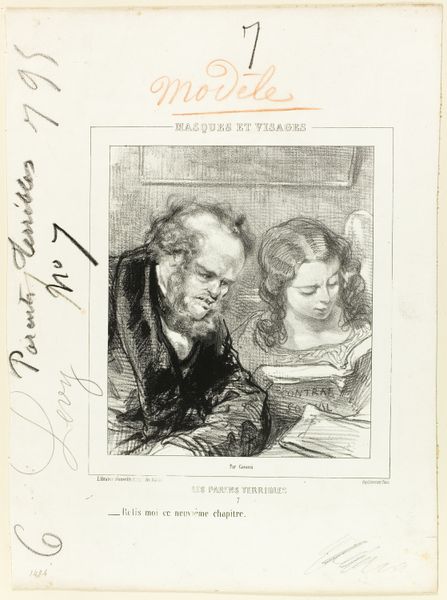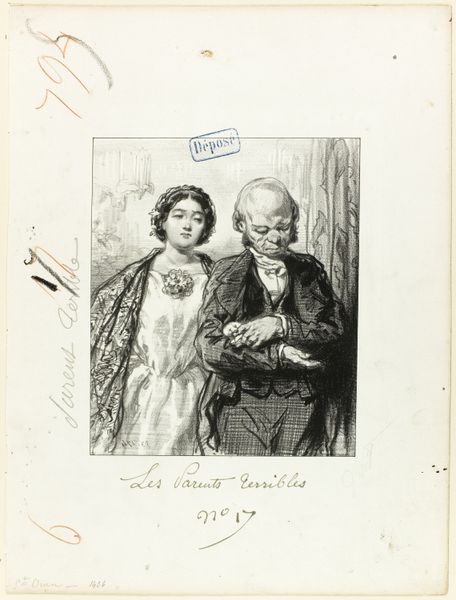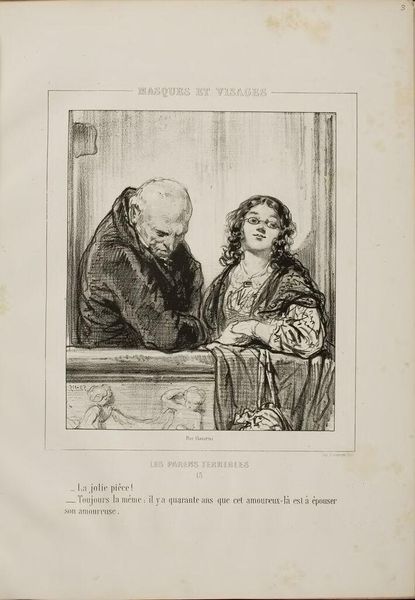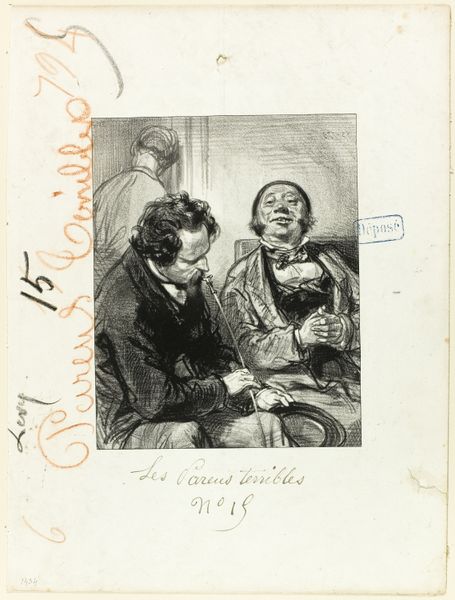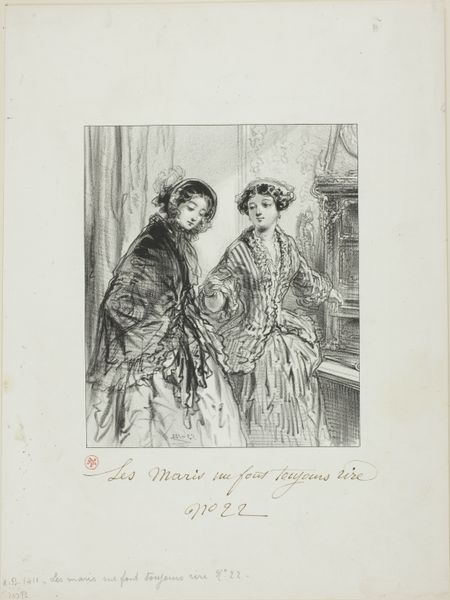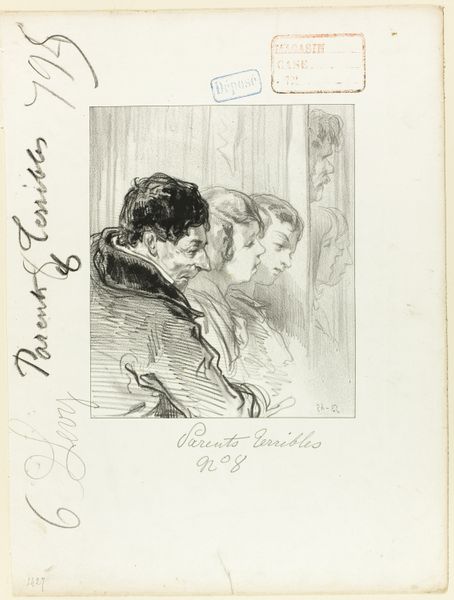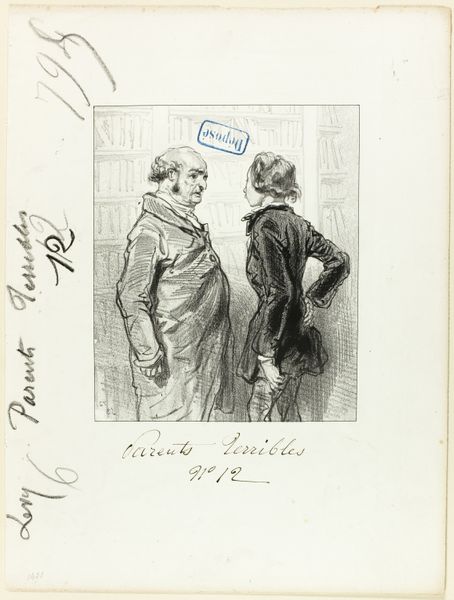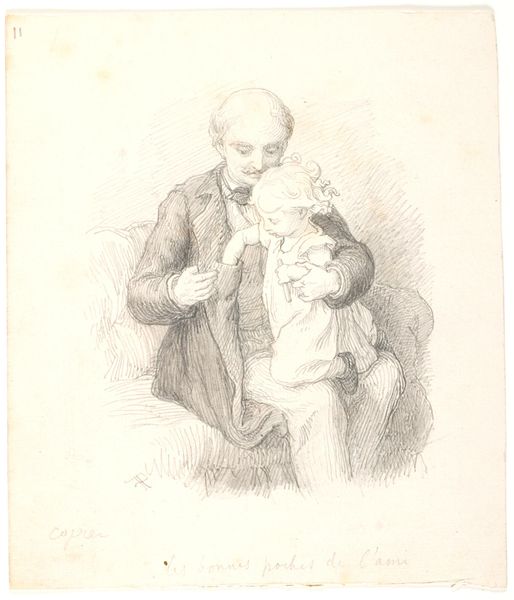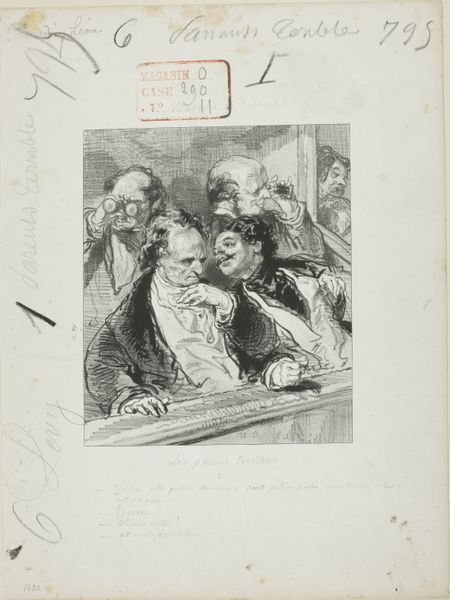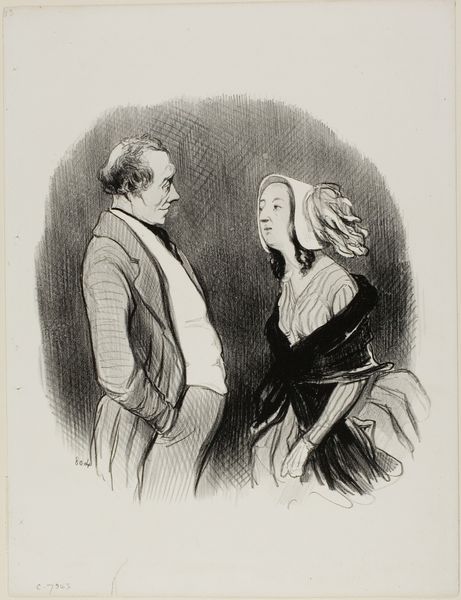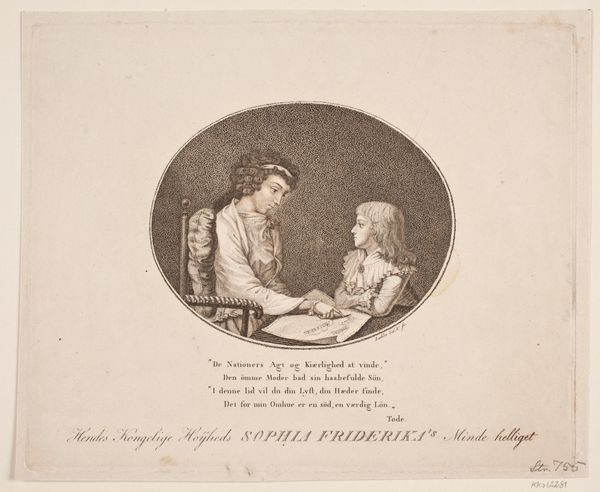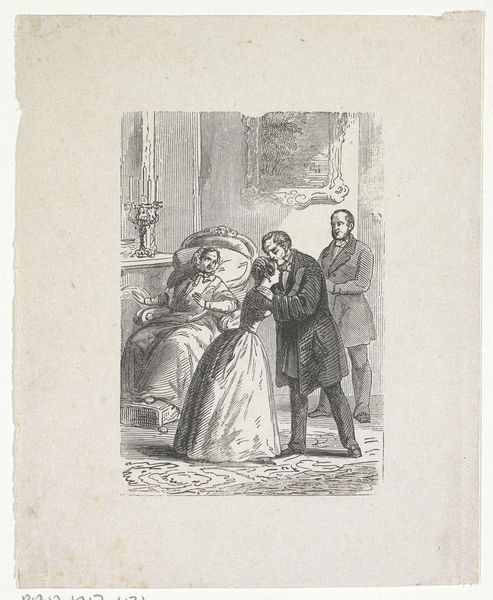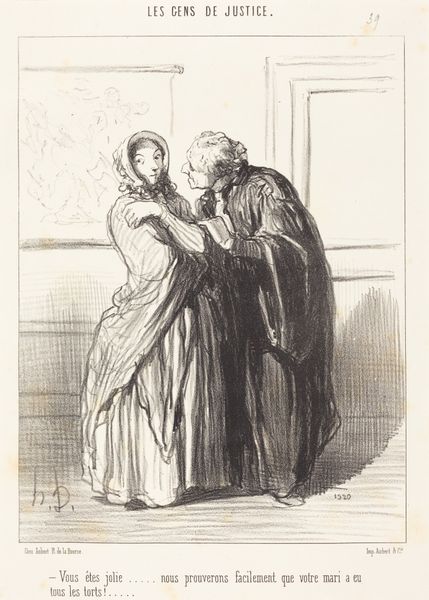
Les-Parents-Terribles series: A lovely play, always the same 1853
0:00
0:00
Dimensions: 193 × 162 mm (image); 359 × 272 mm (sheet)
Copyright: Public Domain
Editor: Here we have Paul Gavarni’s lithograph from 1853, titled “Les-Parents-Terribles series: A lovely play, always the same.” It’s currently housed at the Art Institute of Chicago. The two figures seem confined, almost trapped, by the architecture around them. How would you interpret this piece? Curator: Considering Gavarni’s context, we must consider lithography itself: its rise provided a new mode of affordable image production and mass consumption. The material process is crucial; consider how easily Gavarni’s images could circulate, becoming commodities consumed by a broad public. Editor: That’s fascinating! So, you’re suggesting that the medium itself influenced how the subject matter was received? Curator: Precisely. Gavarni's focus on genre painting reflects the growing interest in everyday life and social observation. But also, let's not forget the social critique inherent in the title "Terrible Parents." Think about the labor involved in producing such a print and how it reaches an audience engaging in its own form of work. Editor: It’s interesting to view their troubled relationship through the lens of print production and its accessibility. It moves beyond just seeing a snapshot of their domestic life. Curator: It pushes us to acknowledge the machinery behind artistic production. Who gets to see art, how is it made, and how much does it cost are crucial components to understanding this artwork, don't you think? Editor: Absolutely. Thinking about the lithograph's material context really reframes my perspective on the artwork, shifting it towards how it functions within a larger system of production and consumption. Thank you!
Comments
No comments
Be the first to comment and join the conversation on the ultimate creative platform.
